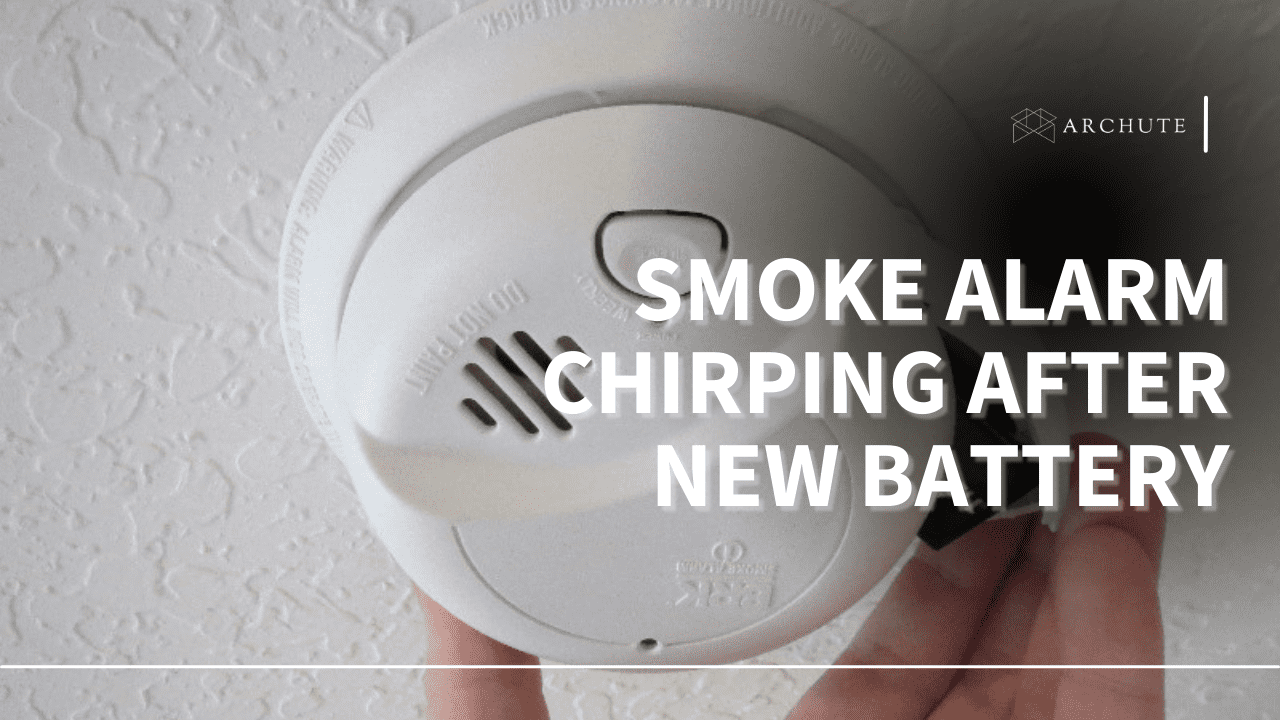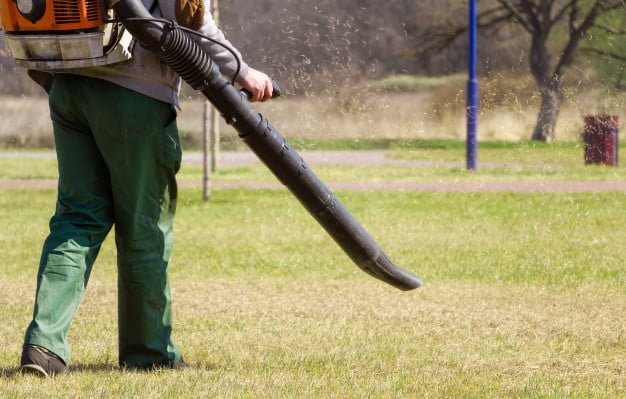Smoke alarms are essential in homes, business places, and other establishments since they notify you of possible fire outbreaks. They can help keep your loved ones and property safe from fire accidents. Unfortunately, replacing the batteries can cause the smoke detector to keep chirping. So, we'll discuss how to stop the smoke alarm chirping after new battery installation.
Let's get started!
Types of Smoke Detectors
So, there are two types of smoke alarms; battery operated and hardwired smoke alarms. Let's look at them in detail below.
Battery-Operated Smoke Detectors
As the name suggests, these smoke alarms operate on battery power. That means they can run low, and you'll need to replace them, which is what the chirping smoke detector is basically saying.
Hardwired Smoke Alarms
A hardwired smoke detector runs on electricity. While these alarms primarily rely on your electrical system to operate, they also have a battery backup to ensure they work even in a power outage. When these batteries run out of juice, they also cause the smoke detector to chirp.
Replacing Batteries in Your Smoke Alarm
When it's time to replace your smoke alarm batteries, here are the steps you should take.
First, shut down the power to the hardwired smoke alarm using your home's circuit breaker. This will ensure you aren't in danger of getting electrocuted as you change out the batteries.
Then, remove the face of the smoke detector by popping it off, using a screwdriver or twisting it open to access the internal components.
Once open, you'll see the inner parts of the smoke detector. The backup battery probably looks rectangular in shape like the ones used in most smoke detectors. Remove the battery and set it aside for disposal.
Next, put the new battery into the smoke alarm and ensure the terminals are aligned correctly. Finally, put the cover back on and turn your power back on.
How to Stop Smoke Alarm Chirping After New Battery Installation
If you still have a beeping smoke detector after changing the battery, then you'll need to reset it to clear the error from the device's processor. Here's how to do it:
Hardwired Alarms
Start by switching off the electric circuit breaker to ensure the smoke detector doesn't have any current as you handle it.
Next, take the smoke alarm out of the mounting bracket and open it to access the battery drawer. Take out the new batteries and long-press the "Test" button for about 15 seconds. At this point, the alarm should sound shortly and then quiet down.
Now, return the battery to the battery compartment and restore the power cable and install the device on the brackets. When you turn your circuit breaker on, the smoke detector will once again chirp to confirm power is restored and then it'll get silent.
Battery-Operated Smoke Detectors
For these smoke alarms, first, remove the battery from the device and hold the "Test" button down for a minimum of 15 seconds. This should cause the smoke alarm to beep for a short time and then go silent.
Reinstall the battery backup and listen for a chirp to confirm that the device is back in operation. If the smoke alarm doesn't stop beeping, you should check it for obstructions.
How to Test Your Smoke Alarm After Replacing the Batteries
Once you put the new batteries in place, you'll need to test the unit to see whether it's up and running again. This involves pushing the "Test" button and listening for a beet to affirm that the smoke alarm is functioning normally.
How Long Should You Wait to Change The Batteries?
The 9V batteries of smoke detectors can last for years before needing replacement. Nevertheless, the U.S Consumer Product Safety Commission recommends that you should replace the batteries every six months or yearly. This will help avoid unknowingly putting your family in danger if the batteries are low.
Common Causes of False Alarms
False alarms don't sound the same as chirps. They have a lower pitch and are meant to alert you of smoke presence in the home. There are different reasons why you could have a false alarm at home. Let's consider what could be the cause when your smoke alarm chirps.
1. Low Battery
If it's been a while since you heard your smoke detector beeping, your batteries are probably still good. When the power in your batteries starts running low, the smoke detector will chirp to let you know that it's necessary to change the batteries. Once you replace the old ones, the sound should stop.
2. Dust
Dust is also a common cause of false alarms at home. The sensors that smoke alarms use to detect carbon monoxide particles in the air are sensitive, and the accumulation of dust can stop them from working as they should. Dust could also build a barrier around the battery connection, making it seem as if the batteries are dead.
As such, we recommend that you clean the smoke detector twice every year to ensure you get rid of dust before it becomes a serious problem. You can do this using a vacuum cleaner, compressed air, or a wipe to clear out the dirt.
3. Battery Pull Tab or Peg
This situation normally occurs after changing the batteries on your smoke detector. Some smoke alarms come with a small peg or battery pull tab that holds the battery drawer in place. Once you pull the peg out, you can take the battery out. Most people forget to push the peg back into place after swapping out the old battery.
So, you'll need to ensure the battery pull tab is where it belongs after installing the new batteries to avoid a false alarm.
4. Direct Sunlight
If you position your smoke alarm where they are in direct contact with sun rays, they'll probably sound multiple times. This is because the hot sun rays can affect the smoke sensors and cause your device to beep since it'll assume there's smoke in the house. So, you should probably move the smoke detectors to another location to avoid false alarms.
5. Heating or Cooling Vents
If you have cooling or heating vents at home, they could also be the reason your smoke detector keeps going off. That's why you need to get your smoke alarms installed in places where they are clear from the air vents. This is because the smoke sensors will detect the hot air moving through the vents into your indoor space and assume that it's smoke.
As such, you should only place the detector in areas where it won't be affected by your home's heating system.
6. Temperature Fluctuations
Another cause of false alarms at home is sudden temperature changes. Of course, air vents are among the reasons you have temperature fluctuations at home. However, you could also be getting false alarms because of the presence of steam. The steam could be coming from your kitchen during cooking or from your bathroom as you take a hot shower.
To reduce false alarms caused by temperature changes, you should install the smoke alarm away from the kitchen or bathroom door. Otherwise, every time the sensors detect steam, the alarm will go off, and you'll need to reset your device.
Check out the best air conditioners for vehicles right here.
Different Smoke Alarm Noises and What they Mean
Carbon monoxide alarms produce different noises which communicate different information. Let's look at what each sound means below.
1. Single Beep Every Minute
The first sound you could hear is a single beep that repeats every minute or several seconds. Normally, this sound is meant to notify you that the batteries are low and need to replace. However, it won't always be the batteries, and if the device beeps after you insert new batteries, you'll know you probably have a different problem.
Fortunately, you can easily clean the sensors using the dust removal methods we discussed earlier. Once you remove the dust, the smoke alarms should get back to normal. If you've had the smoke alarm for about 10 years, beeping could indicate it's at the end of its lifespan.
2. Multiple Beeps
Sometimes, you could hear multiple beeps, like a series of interconnected alarms. If your device detects carbon monoxide in the air, it'll probably beep several times to signal you have a problem. Three beeps at a time mean the device is malfunctioning for one device, while in another, it could mean you have smoke.
So, you should go through your smoke detector manual to see what the different sounds mean.
3. Continuous Beeps
If you have continuous beeps and the alarm isn't becoming quiet, it means the device has detected smoke in the air. As such, you'll need to check out where the smoke is coming from. Naturally, it'll be somewhere close to the smoke detector's location.
Conclusion
Smoke alarms are essential to your family and property safety, which is why you should install them in your home. Part of maintaining your smoke alarm involves replacing the batteries when they run low.
When you do so, you could end up with some beeps that require you to reset the smoke detector. Now that you know how to turn off the smoke alarm chirping after the new battery installation, you can rest easy as the device keeps you safe from fire hazards.
















